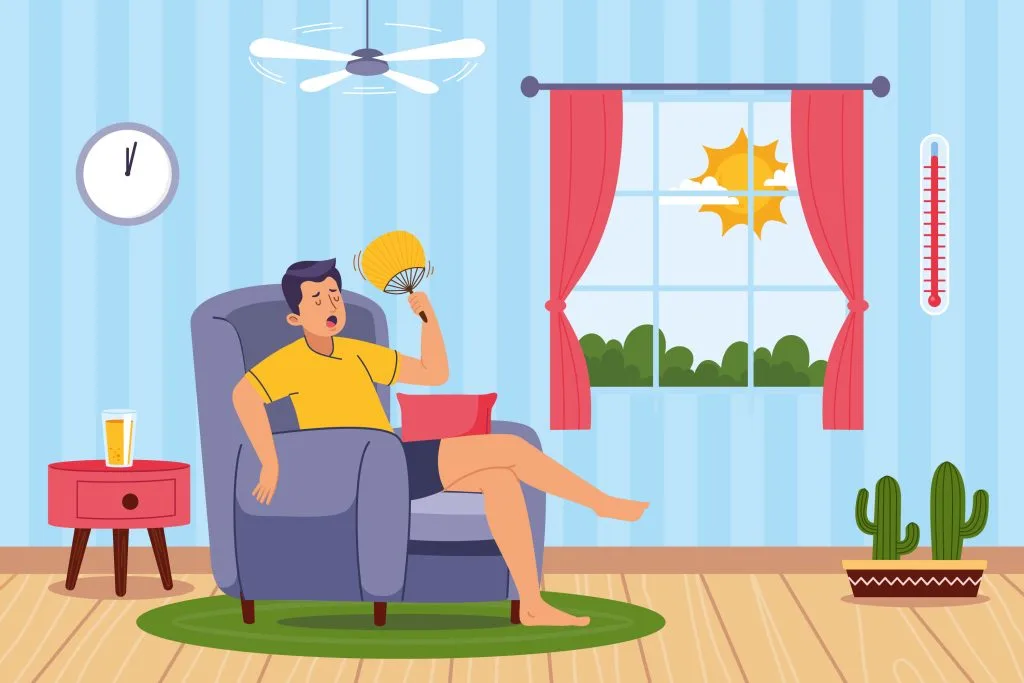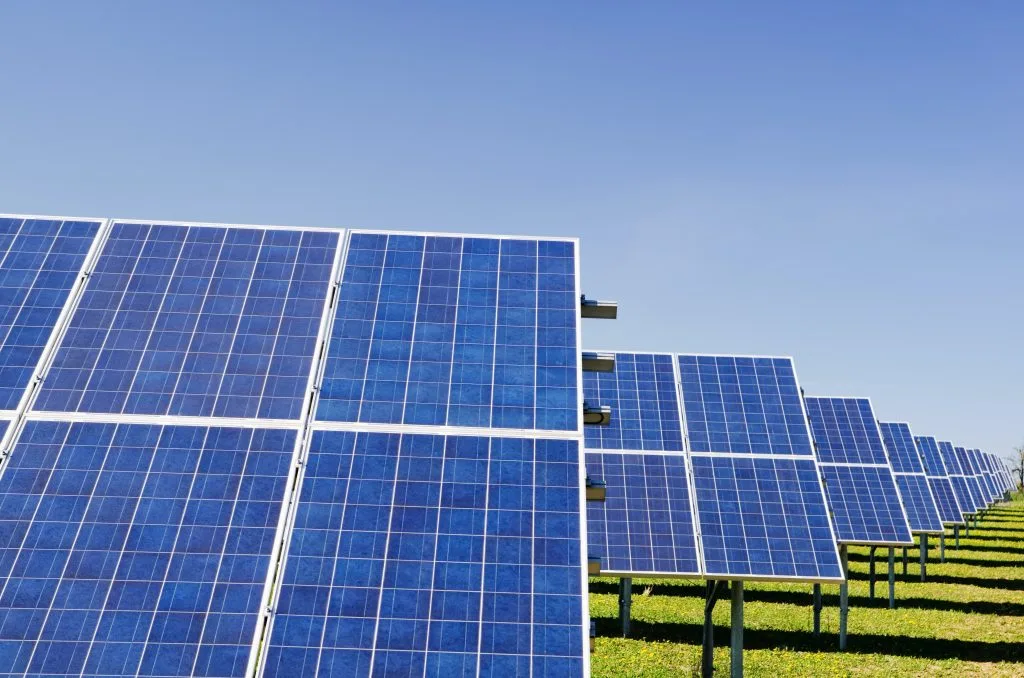At a glance
- Embrace smart plugs to remotely control and schedule the power supply to appliances, preventing unnecessary energy use and consumption during standby periods.
- Explore natural cooling methods, such as strategic window openings and cross-ventilation, combined with the use of ceiling fans to enhance airflow and cool indoor spaces efficiently.
- Invest in programmable thermostats for automated temperature control and prioritise energy-efficient appliances, marked with certifications like ENERGY STAR, to minimise electricity usage without compromising performance.
Australia’s summers are legendary for scorching temperatures, and with the mercury rising, so do our energy bills. Many homes, often described as “glorified tents,” fall short of energy efficiency, making staying cool both a comfort challenge and a financial burden. Today, we’ll explore practical strategies to beat the heat while keeping energy expenses in check, both at home and in the office. From maximising insulation and smart shading solutions to efficient air conditioning use and savvy energy provider switches, let’s delve into actionable steps tailored to the Australian climate.
Energy Saving Tips to Keep Your Home Cool and Save
Maximising Insulation and Sealing
The efficiency of your home or office insulation plays a crucial role in maintaining a comfortable indoor temperature. Even small changes can have a significant impact. For those unable to invest in top-of-the-line solutions to insulate, then sealing draughts and stopping leaks around windows and doors, and skirting boards is a practical and budget-friendly approach. In the winter, this will help reduce heat loss, while in the summer, it keeps the cool air inside which will mean you will use less energy for heating or cooling your home or office.
Smart Shading and Ventilation Solutions
Shading your windows from direct sunlight is a game-changer when it comes to combating the Australian summer heat. External blinds, awnings, and strategically planted trees can shield your space, reducing the need for excessive air-conditioner use and help keep your home cool. For renters or those on a budget, temporary shade cloth structures and reflective window films offer affordable alternatives to cool and save. Additionally, utilising natural ventilation by opening windows during cooler hours can promote air circulation and have a cooling effect, creating a more comfortable environment which can save energy and money.
Efficient Air Conditioning Use
Air conditioning is a saviour in the summer to keep cool, but it can also be a major energy consumer. Energy Efficiency Council CEO Luke Menzel recommends setting the temperature between 24-25°C and cooling only occupied rooms in your home or office. Closing doors and windows, as well as curtains and blinds in the rooms where the air conditioner is on enhances its efficiency. By adopting these practices, you can enjoy a cool indoor space without facing an outrageous energy bill for the energy used to cool the air throughout summer.
Utilising Government Rebates
Governments often provide rebates and incentives to encourage energy-efficient practices. Research and take advantage of any available rebates for home or office improvements. This could include upgrading insulation, installing energy-efficient appliances, or even investing in solar solutions. These initiatives not only contribute to a more sustainable future but can also significantly reduce your energy bills. Check online to see if there are any federal or state government rebates available for you to take advantage of. The Victorian Energy Upgrades program is an example of one such state government initiative.
Comparing Your Energy Bill and Switching Energy Providers
Switching energy providers can be a powerful tool for saving money on your energy bills. Whether you’re a homeowner or a renter, exploring different energy plans, looking for competitive energy rates and offers, and considering seasonal discounts can result in substantial savings on cooling and heating costs. Regularly reviewing and comparing plans ensures that you’re always getting the best deal, aligning with your efforts to stay cool without burning a hole in your pocket. Across a year on energy expenses this can add up to significant amounts if you are on the best electricity or gas rates for your area.
Audit Your Appliances
An often-overlooked aspect of household energy use and energy efficiency is the impact of household appliances. Older appliances, such as refrigerators and light bulbs, may contribute a large per cent of the energy used and significantly impact your energy bills. Consider investing in newer, energy-efficient LED bulbs that not only consume less energy but also radiate less heat. For larger appliances, a simple and cost-effective solution is to use smart plugs that monitor energy consumption, helping you identify which appliances are energy hogs and need to be replaced, to reduce the amount of energy being consumed.
Energy-Efficient Lighting Solutions
Consider switching to energy-efficient LED bulbs, which not only last longer but also emit less heat compared to traditional incandescent bulbs. This not only reduces your cooling needs but also saves on lighting costs in the long run.
Harnessing Solar Energy Solutions
Solar power isn’t just for large-scale installations; it can be a practical solution for homeowners looking to cut down on energy bills. Consider installing solar panels on your roof to harness the abundant Australian sunlight. While the initial investment may seem substantial, the long-term savings can be considerable. Government incentives and rebates often make solar installations more financially viable, contributing to both a greener lifestyle and reduced energy costs.
Smart Cooling with Ceiling Fans
Ceiling fans are a cost-effective and energy-efficient way to keep indoor spaces cool. While they may not lower the temperature like air conditioners, the wind-chill effect created by ceiling fans can make you feel several degrees cooler.
Harness the Power of Smart Plugs
Smart plugs are nifty devices that allow you to control the power supply to your appliances remotely. By connecting your electronics to smart plugs, you can schedule when they turn on and off, ensuring they aren’t drawing unnecessary power when not in use. This is a simple yet effective solution that can contribute to significant energy savings over time by making your home or office more energy efficient.
Embrace Natural Cooling Methods
Before reaching for the thermostat, consider alternative methods to help cool your home. Opening windows strategically during cooler parts of the day and promoting cross-ventilation can bring in fresh air, creating a naturally cool indoor environment. Ceiling fans, when used in conjunction with open windows, can enhance this natural cooling process. If your home uses passive cooling strategies when available, these methods of alternative cooling can make a major impact on the energy needed to keep your home cooler and are great ways to save on your energy bills.
Choose Energy-Efficient Appliances
When it’s time to replace or upgrade household appliances, opt for those with high energy efficiency ratings. From refrigerators to air conditioners and hot water systems to heat pump appliances, appliances with the highest ENERGY STAR rating label are designed to consume less energy without compromising performance. While the initial investment might be slightly higher, the long-term energy savings make it a wise choice.
Invest in Programmable Thermostats
Programmable thermostats offer a convenient way to manage your home’s temperature efficiently. Set different temperatures for various times of the day, allowing for warmer conditions when you’re away and cooler temperatures when you’re at home. This automated approach ensures that your heating and cooling systems are optimised, reducing energy usage without sacrificing comfort.
Explore Energy-Efficient Landscaping
The external environment can also play a role in your energy expenses. Strategically planting trees or installing shade structures around your home or office can provide natural cooling, reducing the reliance on air conditioning. Well-placed landscaping not only enhances the aesthetic appeal but also contributes to energy-efficient practices.
Practice Water Conservation
While not directly related to electricity, water conservation indirectly impacts energy usage. Energy is often expended in treating and heating water. By adopting water-saving practices, such as fixing leaks, using water-efficient appliances, and being mindful of water usage, you contribute to overall energy efficiency and cost savings.
Educate and Involve Family or Employees
Creating a culture of energy efficiency requires the involvement of everyone in the household or office. Educate family members or employees about the importance of energy conservation and inform them of tips for saving energy and encourage them to adopt these energy-saving habits. Simple actions, like turning off lights and appliances when not needed, can collectively make a significant impact on energy bills.
Stay Informed About Technological Advances
The field of energy efficiency is continually evolving with technological advancements. Stay informed about new technologies and innovations that can further enhance your efforts to save on energy bills. From smart home devices to improved insulation materials, staying abreast of developments allows you to make informed decisions for a cooler and more energy-efficient living or working space.
In conclusion, staying cool in the Australian summer doesn’t have to come at the cost of skyrocketing energy bills. By implementing these practical strategies and changes to your home – from insulation and shading to efficient air conditioning using energy comparison and energy provider switches – you can create a comfortable living and working environment without breaking the bank. Remember, even small changes can make a big difference, ensuring you stay cool, both physically and financially, during the hottest months of the year.
-
Comprehensive insights into the energy bill relief fund in Australia
5 May 2024
Energy
-
Find the best electricity deal for electric vehicle charging
28 April 2024
Gas & Electricity
-
Understanding energy demand charges: A guide for business owners
25 April 2024
Energy



